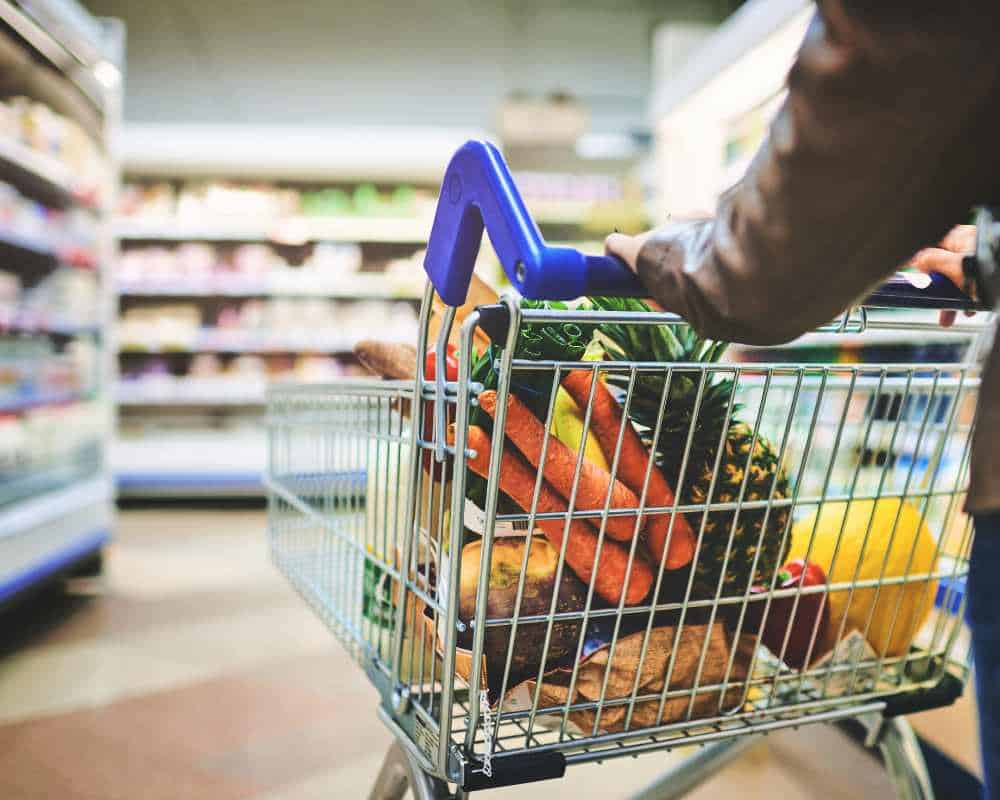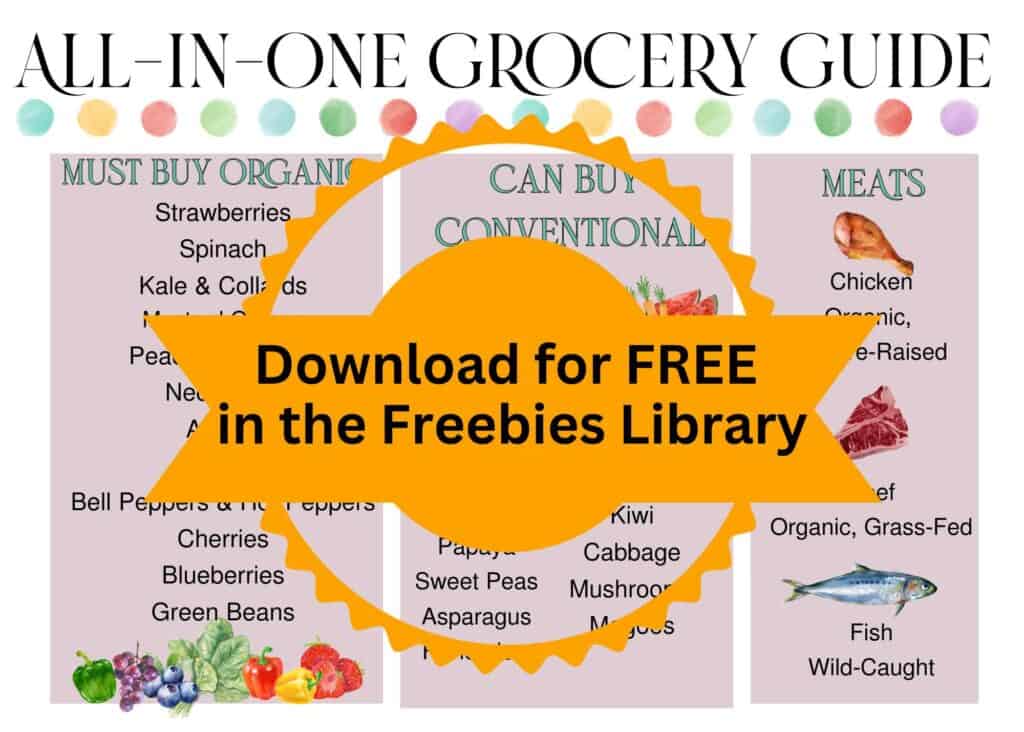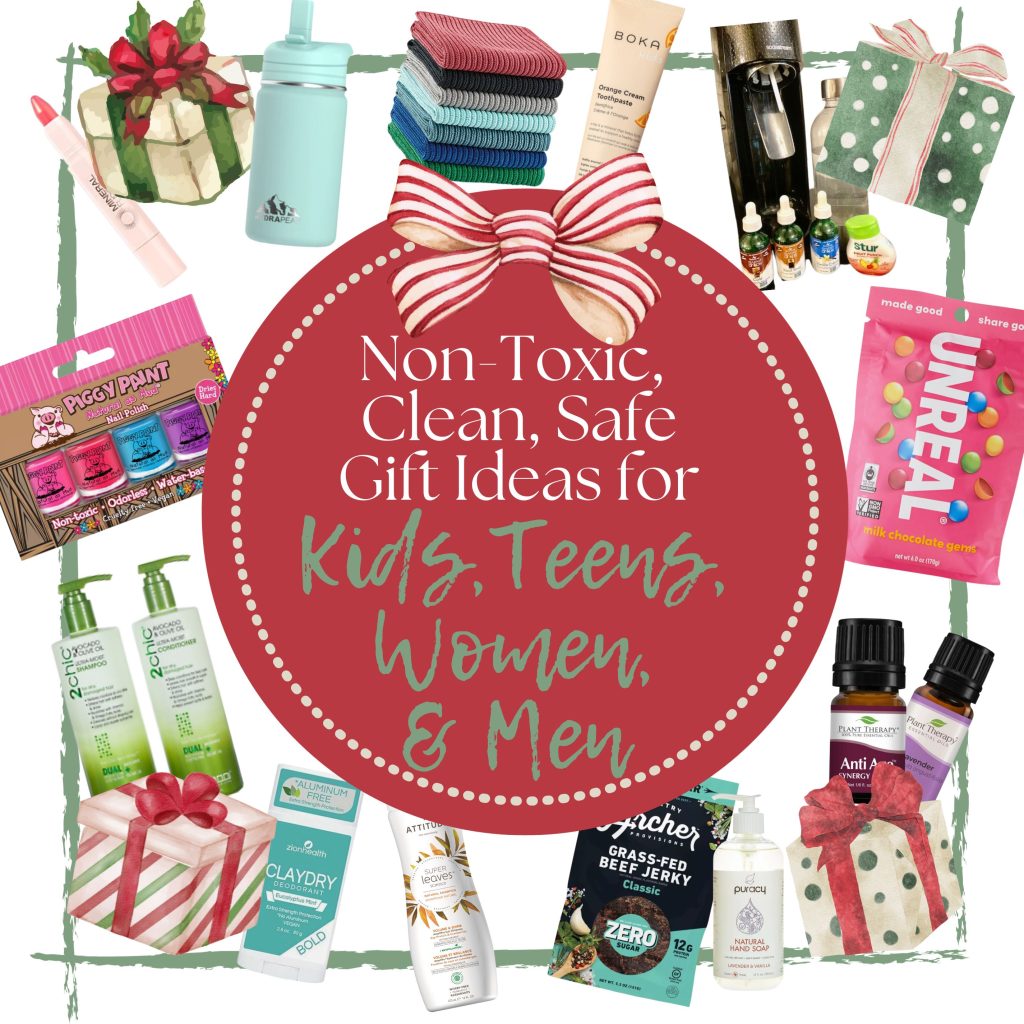Do you find the grocery store completely overwhelming? It can be exhausting reading labels and trying to discern if a particular item is REALLY healthy? Good news! I’ve got some simple tips and tools to help make it SO MUCH easier!
Sometimes I cringe at the thought of the products I used to buy before I started reading labels. I had no idea that there were certain ingredients I needed to avoid. So, Lean Cuisines, Slimfast Bars, 100 Calories Packs, canned soup…you name it, I ate it! They were marketed as healthy choices, and I simply knew no better. As it turns out, those chemical concoctions were far from healthy, and they were far from real food. And eating real food, as God intended for our bodies when he designed them, is incredibly important.
But the grocery store can be a daunting place. Food manufacturers spend lots of money on marketing and propaganda to entice you to select their product off of those shelves. We are often tired, hungry, and hurried by the time we get to the store. We are tempted to just grab our usuals and hit the checkout ASAP. But I encourage you to slowly-but-surely, reevaluate your shopping cart.
Today, I’ve got 3 tips for you that can help you become a diligent shopper for your family, and help you identify the ingredients you need to avoid when grocery shopping.
Members can download this sheet and tons of other items for FREE in my Freebies Library! Click here to join.
Tip #1: Ignore the Front of the Package
When you are grocery shopping, it is wise to absolutely ignore the front of the package. You’ll see claims like, “High in Fiber”, “Made with Whole Grains”, “Natural Flavors”, and they sound good, right??? Wrong! These phrases are completely unregulated and mean almost nothing. Instead, you’re going to HAVE to flip the package over and read the ingredient labels on the back. Don’t know what you’re looking for on those ingredient labels? Keep reading!
Tip #2: Use Your Eagle-Eye When It Comes to These 2 Ingredients
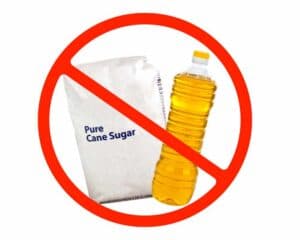
Pull out your eagle-eye when you’re grocery shopping, and zero in on just 2 ingredients to avoid: sugar and seed oils. If you can make diligent decisions regarding just those 2 ingredients in packaged foods, you’ll be making leaps and bounds of progress.
Sugar can have many names including fructose, maltose, lactose, dextrose, sucrose, cane juice, corn sweetener, corn syrup, high-fructose corn syrup, and invert sugar, so your eagle-eye will need to watch out for all of those varieties. While it would be ideal to avoid sugar completely, that might not be practical for some families. Remember the American Academy of Pediatrics suggests no more than 25 grams of sugar per day for children, but I would shoot for about half of that (source)!
Why is sugar so bad? There was a time when we thought that the only problem with giving sugar to our kids was related to causing tooth decay and maybe making them a bit hyper for a little while. If those were our only concerns, we could just spend more time brushing their teeth and let them play outside to run off some energy. But sadly, the stakes are much higher when it comes to over-consumption of sugar. There are mounds of research pointing to sugar suppressing the immune system, causing diabetes, feeding cancers, contributing to asthma, increasing inflammation, delaying brain development, leading to heart disease, and so much more. Here are some sources (Source 1 and Source 2) that point to more research if you want to dig deeper into sugar.
Seed oils are also a big problem, so your eagle-eye needs to learn how to spot them from a mile away, too. Dr. Cate Shanahan is a great source for learning more about seed oils. She calls the top 8 seed oil offenders “The Hateful Eight”. They include Canola Oil, Cottonseed Oil, Corn Oil, Soybean Oil, Safflower Oil, Sunflower Oil, Grapeseed Oil, and Ricebran Oil.
Dr. Chris Knobbe is another great source for learning about seed oils. He explains how they are pro-oxidative and pro-inflammatory, and they are a major factor in just about any modern Western disease you can name (heart disease, cancer, and autoimmune diseases, just to name a few). We’ve been told that these seed oils are healthy because they can lower our cholesterol. That simply isn’t true, and Dr. Knobbe explains why here.
Tip #3: Stick with the Dirty Dozen and Clean 15
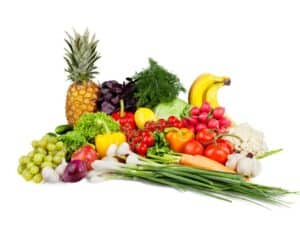
All diligent shoppers need to know about the Environmental Working Group’s” Dirty Dozen” and “Clean 15” lists. These list are updated every year, and they are incredibly helpful as you make decisions regarding which fruits and vegetables need to be organic. In a perfect world, where budgets didn’t exist, we’d all buy 100% organic everything. But most of us can’t do that. So, these 2 lists can be major budget-savers!
After extensive testing, the EWG ranks their top 12 produce items that contained the MOST pesticides. These “Dirty Dozen” need to be avoided in their conventional form, so you should ONLY buy the organic form. For example, strawberries always make the Dirty Dozen list. I will ONLY buy organic strawberries for my family. Sometimes organic strawberries are crazy-expensive. On those weeks, we may just skip strawberries altogether and have a melon or pineapple instead. Apples also make the Dirty Dozen list, so I’m also careful about apple products like applesauce…organic ONLY at our house!
The EWG also publishes a “Clean 15” each year, which is a list of the top 15 produce items that contained the LEAST amount of pesticides. If you are on a budget, you can feel good about skipping the organic versions of these 15 items and buying conventional instead. For example, I often buy regular avocados and mushrooms to save a little money. I feel confident knowing that even the conventional version is safe for my family to eat after a quick washing. (Side note- Research has shown that soaking your produce in baking soda water for about 15 minutes then rinsing well removes the most pesticides.)
Download the Free Shopping Guide
If all of this still sounds like a lot to remember, be sure to download my FREE All-In-One Shopping Guide to take with you to the store. It quickly lists the Dirty Dozen, the Clean 15, the Hateful 8, and all of the other ingredients you should avoid when grocery shopping. It will help simplify your label-reading instantly. It’s available in my Freebies Library, so be sure to look for it below!
Happy and diligent shopping, Mamas!
Want more product recommendations and shopping guides? Visit my Shop with Diligence page!

